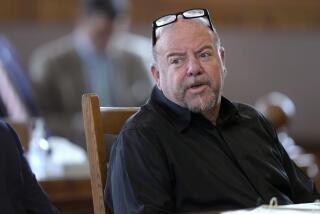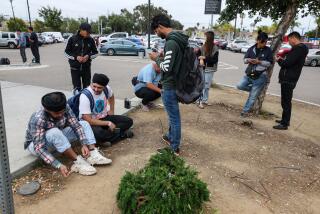Pacific Bell Users Will Get $5-Million Refund
- Share via
Thousands of Pacific Bell’s rural customers are expected to share about $5 million in refunds this summer under a quietly negotiated tentative settlement of a complaint accusing the company of charging customers for push-button telephone service that it never provided.
The California Public Utilities Commission approved the proposed settlement in secret session on Friday but issued no press release, apparently at Pacific Bell’s request. The action comes less than three years after the PUC ordered the phone company to refund millions of dollars to customers pressured into buying services that they neither needed nor wanted.
For the $5-million settlement, Pacific Bell customers can thank George Sawaya, a retired senior auditor in the Downey office of the State Board of Equalization. A resident of the Sierra foothill hamlet of Pollock Pines since 1981, Sawaya has led the three-year battle for compensation for the wrongly charged phone customers.
As Sawaya explained Tuesday, he decided to sign up for Pacific Bell’s “Touch Tone” service in 1985 after the company sent him, along with his monthly phone bill, a list of available extra services and their prices. The mailing said Touch Tone service “places your calls faster than a rotary-dial phone can,” a feature that Sawaya wanted.
‘Marketing Abuse’ Charged
But after Sawaya paid a $5 sign-up charge for the service and agreed to pay an extra $1.20 a month for it, he found no improvement. After calling Pacific Bell’s local office, he learned that the older, non-digital switch serving much of El Dorado County could not provide full Touch Tone service. He cancelled the service and Pacific Bell refunded his payments.
Then, Sawaya said, he thought about his neighbors served by the same electromechanical switch, along with the 30% of Pacific Bell customers then served by similar equipment. So in January, 1986, he filed a class-action complaint with the PUC.
At the subsequent hearing, Sawaya described the literature describing Touch Tone as “deceptive or misleading.” He called it “a form of marketing abuse not unlike others which have recently been under consideration by the Public Utilities Commission.”
Sawaya was referring to a PUC finding in August, 1986, that Pacific Bell had intentionally engaged in abusive sales techniques. Among other things, its agents, working under a quota system, improperly sold basic telephone service with such extras as call-forwarding and call-waiting. Some customers claimed that the Pacific Bell sales pitches misled them into believing that such services were not available individually or that they could not get basic telephone service without them.
The PUC made Pacific Bell offer refunds, at a cost to the company of more than $40 million, to affected customers. It also was required to contribute to a consumer-education fund.
Sawaya Persevered
A major difference between the marketing-abuse case and the recent one, Sawaya pointed out, was that in the first case the company was at least providing the services for which it was billing customers.
At Sawaya’s 1986 hearing, a senior Pacific Bell engineer, Loren Wedel, testified that there was no physical change in Sawaya’s service as a result of his having signed up for Touch Tone service. Only billing records were changed, the engineer confirmed.
Nonetheless, the PUC dismissed the case on the technical grounds that because Sawaya had obtained a refund, he could not intervene on behalf of other customers in a class-action complaint. Undeterred, Sawaya asked for a rehearing.
That rehearing petition was dismissed behind closed doors on Friday. But in exchange, Pacific Bell assured the commissioners that it would submit a plan to refund “about $5 million” to customers in Sawaya’s circumstances--a settlement Sawaya viewed “positively.” It also agreed not to charge them in the future for Touch Tone service, which is now available to Pollock Pines customers.
More to Read
Inside the business of entertainment
The Wide Shot brings you news, analysis and insights on everything from streaming wars to production — and what it all means for the future.
You may occasionally receive promotional content from the Los Angeles Times.










